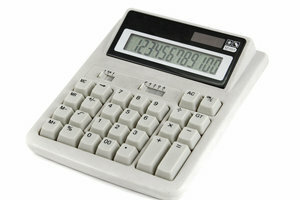Scientific notation for numbers
Whether you have to write a term paper or an experimental protocol: In many sciences is it is common to use numbers in the so-called scientific notation or notation perform. But how exactly does it work?

Scientific notation - that's what it means
- The scientific notation or notation of numbers is in most cases a notation in powers of ten. This makes it possible to display very large or very small numbers without a long accumulation of zeros.
- Exceptions are small or clearly writable values such as natural numbers or simple decimal fractions such as 0.5.
- In scientific notation, you always have one place before the comma, then (depending on the accuracy) two or more decimal places and a power of ten, which is positive for large numbers and negative for very small numbers is. There is a mal symbol between the number and the power of ten.
- For example, 1.25 * 106 a correct spelling, the number 125.6 * 10-3 but not, as there are three places before the comma.
By the way: Also scientific calculator give Counting again in this notation, because the number of digits required to represent the number would often exceed the number of digits available to the pocket calculator. So pay attention to the two or three places on the far right on the calculator - there is the power of ten.
How do you enter small numbers? - This is how it works with powers of ten
If there are numerous small numbers in tasks, the input in the ...
Practice the notation - examples with numbers
It doesn't work without practice - you have to get used to this notation of course:
- Before you start with scientific notation, you should first familiarize yourself with the usual powers of ten notation. For example, 1,000 = 103 and 1 million = 106. For fractions, 1/100 = 10 applies-2 and 1 / 10,000 = 10-5. As a rule of thumb: number of zeros = exponent. But be careful: 0.001 = 10-3; here you count the digits after the decimal point until you reach a number other than zero (here the 1).
- If you want to write the number 150,000 scientifically, count the digits (except for the 1) from the end (here 5 digits) and you get 150,000 = 1.5 * 105.
- For the number 0.0000458, count the digits from the beginning after the decimal point until you reach a non-zero digit (here the 4). There are 5 digits, so 0.0000458 = 4.58 * 10-5.
How helpful do you find this article?


